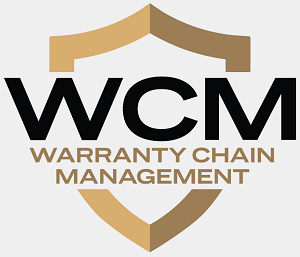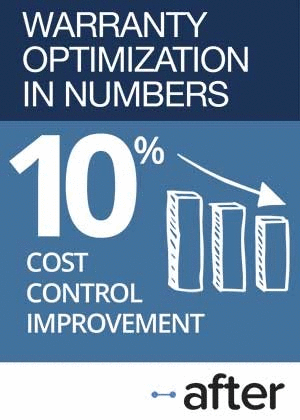February 7, 2013 |

|
ISSN 1550-9214 |
Warranty Accounting Standards:Out with the old and in with the new. FIN 45 for product warranties and TB 90-1 for extended warranties have been replaced by the Accounting Standards Codification, a vast yet easy-to-navigate unification of all GAAP standards.Warranty management has never been easy, but the process of complying with existing accounting standards has gotten much easier. What uses to be a jumble of bulletins, inquiries and statements has been reorganized into a single multi-volume set of standards. Within that extremely broad set of accounting standards, only a few pages in total pertain to product warranties or extended warranties. Fortunately, those who rewrote the old texts also put the new standards into an easy-to-navigate web index. So following the excerpts that follow was much less difficult than tracking down the old standards they replaced. Let's start with some acronyms and terminology. In the U.S., most accounting standards come from the Financial Accounting Standards Board (FASB), a not-for-profit organization launched in 1973. Technically, the U.S. Securities and Exchange Commission (SEC) has the responsibility to set accounting standards for publicly-traded companies, but it has usually relied on the private sector, as in the FASB, to do the work. In the past, the FASB has issued its rules with a somewhat confusing array of acronyms and numbers. Statements of Financial Accounting Standards (SFAS or FAS) covered the broadest concepts. For instance, FAS 5, Accounting for Contingencies, was issued in 1975. And then there also were Statements of Financial Accounting Concepts, FASB Technical Bulletins, Emerging Issues Task Force Abstracts, FASB Staff Positions, and FASB Interpretations. Old Warranty Accounting StandardsIn relation to product warranties, a FASB Interpretation became the most important of all. In November 2002, the group published FASB Interpretation Number 45. The long title was "Guarantor's Accounting and Disclosure Requirements for Guarantees, Including Indirect Guarantees of Indebtedness of Others -- an interpretation of FASB Statements No. 5, 57, and 107 and rescission of FASB Interpretation No. 34." But its nickname was simply FIN 45. Most of the text of FIN 45 related to guarantees of leases, loans, stock prices, letters of credit, etc., which had more to do with the closure of accounting loopholes exploited by Enron and WorldCom before their collapses than with anything warranty-related. But on a single page, almost as a by-the-way addition, FIN 45 set up two new rules that public companies must follow in its financial statements regarding 1) the inclusion of an explanation of the methodology its finance department uses to establish its warranty reserves, and 2) the disclosure of the balances and net changes to that warranty reserve in the form of a table. For extended warranties, the FASB Technical Bulletins set the pace for decades. In 1990, the FASB released Technical Bulletin Number 90-1, "Accounting for Separately Priced Extended Warranty and Product Maintenance Contract," which established the accounting rules for deferred revenue and revenue recognition over the life of a service contract. Basically, it said that the revenue gained from the sale of an extended warranty must be recognized gradually over the life of the contract using the straight-line method, unless a better method more closely tied to actual claims emergence patterns is available. New Set of Accounting StandardsFrom 1973 to 2009 an accountant faced a jumble of FAS, FIN, FTB, FSB, and EITF documents. But then in September 2009, the FASB replaced all of these with a single Accounting Standards Codification, or ASC, which supersedes all of its previous standards, statements, bulletins and interpretations. The FASB said this major simplification was the result of a major five-year project involving more than 200 people, and was an effort to unite all generally accepted accounting principles (GAAP) into one coherent set of rules. The FASB's ASC is organized into topics with three-digit numbers. For instance, there are nine topics under the heading of "Liabilities," of which ASC Topic 460 - Guarantees, is the most relevant to product warranties. Other topics related to liabilities have their own numbers within the 400 series. Revenue is the heading of the 600 series. For extended warranties, the most relevant ASC volume is Topic 605 - Revenue Recognition. This new standard supersedes FASB Technical Bulletin Number 90-1. And then there are some brief references in ASC Topic 460 to ASC Topic 450 - Contingencies, as well as references in ASC Topic 605 to ASC Topic 944 - Financial Services, Insurance. However, most of these citations helpfully repeat what they're referring to and/or define in context the concepts they contain. So it's not an enormous task to follow the narrative. Within each topic, there are easy to follow subtopics, sections, subsections, and paragraphs. And so, within ASC 460, subtopic 10 is entitled "Overall," and within that subtopic is section 15, "Scope and Scope Extensions." And then subsection 15-9 is a statement about the scope of this standard in regards to product warranties and extended warranties:
Using the FASB style, this excerpt would be cited as ASC 460-10-15-9, following the topic-subtopic-section-subsection format. As can be readily seen in the text above, ASC 460-10-15-9(a) and (c) define product warranties more or less as they're generally understood by professionals in the warranty industry. New Rules for Extended Warranties?Also, if we are interpreting ASC 460-10-15-9(b) correctly, then extended warranties are also within the scope of this standard. If that's so, then this is a really big change, because as we outlined in the Apple and Dell extended warranty newsletters, guarantors have previously not been required to reveal the amount of claims paid in relation to their extended warranty contracts. And since knowledge of the expenses associated with a given program is essential when determining its profitability, this would give observers some inkling of the "loss ratio" of that program. As can also be seen towards the end of this column below, the recognized revenue requirements of ASC 605 are very similar to those previously detailed in Technical Bulletin No. 90-1. They detail just the rules related to the accounting treatment of the gross amounts paid by customers, and how that revenue must be recognized gradually over the life of the contract. So ASC 460-10-15-9(b) really is something new and different from what was in FIN 45 and TB 90-1. The rest of ASC Topic 460 is far less inflammatory. In fact, the subsection regarding disclosures for product warranties, ASC 460-10-50-8, repeats more or less verbatim the language used in FIN 45 just over 10 years:
Again, it we're reading this correctly, since extended warranties are described by ASC 460-10-15-9(b), then the table described above would be required for extended warranties as well. That would force extended warranty guarantors to reveal payments made (claims) as well as changes in estimates when they over- or under-accrue for expected payments. That would be unprecedented. Real World Example: HPWhat follows is a real world example of ASC 460-10-50-8 in action. This example is taken from the annual report of Hewlett-Packard Co. for the fiscal year ended October 31, 2012. First, here's one of HP's explanations of its methodology:Warranty Provision We say it's one of HP's explanations because similarly-worded paragraphs about its warranty accounting policies are sprinkled throughout its latest annual report. But any one paragraph explaining how the company determines the size of its warranty liabilities would fulfill the disclosure requirements of ASC 460-10-50-8(b). And here's HP's warranty table, which fulfills the disclosure requirements of ASC 460-10-50-8(c):
Notes to Consolidated Financial Statements (Continued) Note 12: Guarantees The changes in HP's aggregate product warranty liabilities were as follows for the following fiscal years ended October 31:
That's it. That's essentially all it takes to comply with the FASB's warranty accounting rules. Actually, HP provided figures corresponding to subsection 15-9(c) lines 1, 3, 4, 2, and then 5. But as long as it provided all five, that fulfills the requirement. Of course, there are thousands of moving parts behind those numbers and it takes the work of hundreds of people at both HP and its auditors at Ernst & Young LLP to ensure their accuracy. But the essence of all these FASB warranty standards is to 1) explain how the numbers were produced, and 2) disclose those numbers. Warranty Week would then divide the amounts in lines 2 and 4 of the table above by HP's product revenue ($77.9 billion in fiscal 2012 vs. $84.8 billion in fiscal 2012) to determine the company's accrual and claims rates, respectively. Those rates were 2.9% accrual and 3.1% claims in 2012 vs. 3.1% for both warranty metrics in fiscal 2011. Access to FASB StandardsBy the way, the text of all of these ASC topics are available for free to those who go through the registration process on this FASB web page. Click on the link on the right for "Order Professional or Basic View" and then follow the links at the bottom for Basic View -- Free Access. Although basic access to the text is free and open to all who register, all FASB standards are copyrighted and cannot be printed, stored, or reproduced without permission. But as a news publication Warranty Week is claiming the fair use exception to the copyright law for purposes such as criticism, commentary, and news reporting. We mention that because while putting together last week's newsletter on the business challenges of manufacturer warranties, we couldn't find a single online copy of the warranty-related sections of ASC 460. There were plenty of interpretations, but no excerpts anywhere. So from now on, when we need such a link, we can refer to this week's newsletter. We did the same for FIN 45 almost ten years ago in the June 2, 2003 newsletter. At the beginning of ASC 460-10-15-9 above, there is a reference to ASC 460-10-50-4 and specifically to ASC 460-10-50-4(b). Just to show everyone that there's nothing mysterious or hidden in those paragraphs, we include them below. And since a warranty guarantor is not required to heed the requirements of ASC 460-10-50-4(b), we've deleted it.
In truth, not much of this subsection relates to product warranties at all. But we include it here because the standard makes an ominous reference to it. Performance WarrantiesElsewhere, there is a puzzling reference to performance warranties included in another subsection. And then that makes a reference to yet another subsection. We include excerpts of both below. Performance warranties are generally guarantees that are extended by manufacturers of jet engines and other types of motors and engines. They usually specify measurements such as maximum fuel usage or uptime. If these quotas are not met, the manufacturer may need to compensate the customer, who is usually a fleet manager or a large corporation. Subsections ASC 460-10-55-28 and 460-10-55-29 provide implementation guidance for performance warranties. Subsection 55-28 says what they are, and Subsection 55-29 says what they're not: 55-28 A representation by a manufacturer to its customer that a particular engine would produce a specified savings in its energy consumption qualifies for the scope exception in paragraph 460-10-25-1(b) because that representation relates to how efficiently the engine operates. For the sake of completeness, here's the text of the exception specifically referred to above, which somewhat overlaps with the language of other sections that also exempt product warranties from the range of disclosures faced by other forms of guarantees:
There is also a section in ASC 460 which makes references to ASC 450 - Contingencies. As Chris Walker and Scott Cederburg of PricewaterhouseCoopers LLP detailed in last week's newsletter, there are numerous ways for a manufacturer to estimate future warranty expenses, especially when it comes to new product launches, goodwill claims, and safety recalls. Much of this is outside the scope of the formal standards. Still, the underlying message of ASC 450 and ASC 460 is to do the best you can, even if that means taking a wild guess or copying a competitor. And if you can't take a guess, then maybe you should defer recognition of all a product's revenue until its warranty expires and you can say for certain, in the past tense, how much it actually cost to repair. For most companies, that is not an option, which is why accurate accrual estimates are such a sought-after skill. Here's what ASC 460 has to say about estimating warranty accruals:
And here's what these paragraphs are referring to. First, the references to ASC Topic 450 - Contingencies:
Extended WarrantiesFinally, here are the references made above in 25-8 to certain subsections of ASC Topic 605 - Revenue Recognition. These are essentially the new rules for extended warranty revenue recognition, which have now superseded those in FASB Technical Bulletin No. 90-1:
There's a pair of references in the above text to ASC Topic 944 - Financial Services, Insurance, which we won't include here because the above text paraphrases them so well. Basically, these texts are saying that while extended warranties aren't insurance contracts, they can be treated like short-term insurance contracts, because they involve claims, risks and premiums. We think this language is unfortunate, because extended warranty administrators and their legal representatives have done a remarkable job of convincing state lawmakers to not treat them like short-term insurance companies. But now, with the premier maker of accounting standards suggesting that extended warranties are a lot like a short-term insurance contracts, because they "provide coverage against the risk of certain specified claim costs for a specified period," that argument gets harder to make. Warranty or Insurance?For instance, although most extended warranty administrators have successfully navigated the intricacies of adding accidental damage protection clauses to their laptop computer service contracts without being reclassified as insurance in most states, they failed to gain the same exemption with mobile phone plans that go several steps further and add loss and theft to the list of covered perils. Those are commonly called cell phone insurance contracts. They're not merely like insurance. They are insurance. But anyway, we're not lawyers. And we're not accountants. So please don't let this newsletter substitute for professional advice. Manufacturers and administrators would be reckless to take action based on our interpretations of the FASB's warranty accounting standards. The best course of action would be for all warranty professionals to go to fasb.org and sign up for a free Basic Access account on the website, and follow the links to the ASC standards yourself. |
|||||||||||||||||||||||||||||||||||||||||||||||||||||||||||||||||||||||||||||||||||||||||||||||||||||||||||||||||||||||||
| |||||||||||||||||||||||||||||||||||||||||||||||||||||||||||||||||||||||||||||||||||||||||||||||||||||||||||||||||||||||||









